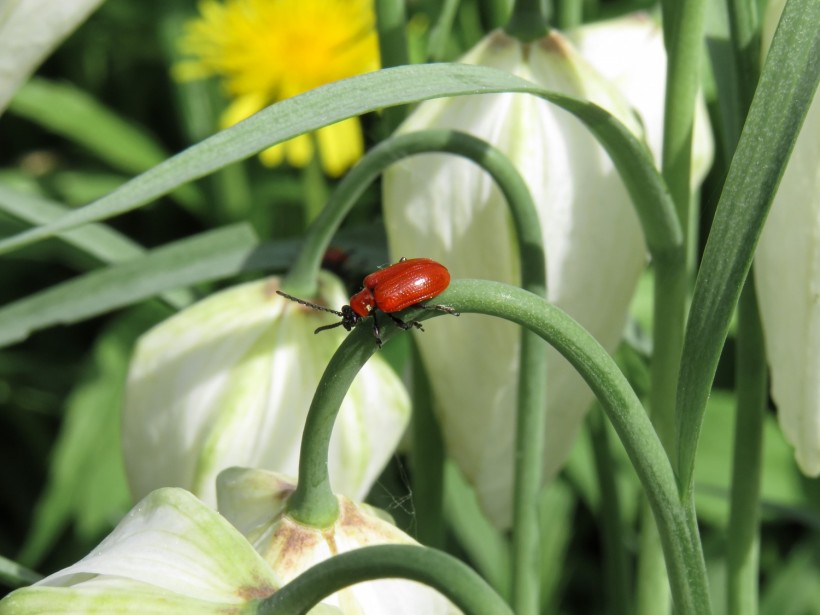Beetles are masters of survival in arid conditions, partly due to their capacity to suck water from the air with their butts. Now, new research explains the mechanism behind it.
Aside from explaining how beetles flourish in circumstances where few other organisms can live, the information might one day be utilized for more targeted and careful management of global pests like the grain weevil and red flour beetle.

An amazing red beetle is sitting on the flower.
Beetles and Their Specialized Butts
Beetles may rehydrate by opening their rectums and sipping traces of water floating in the air, Science Alert reported. They can also reabsorb water from their stool, and their butts are quite good at squeezing their moisture.
These insects use their extraordinary rectal ability to survive in the driest environments on the planet. scientists have known about this unusual approach beetles use to consume water for over a century. But it was not until the recent study that researchers uncovered one of the mechanisms through which beetles hydrate themselves from their butts.
In a press release, Kenneth Veland Halberg, a biologist from the University of Copenhagen in Denmark, explains that the beetle can go through its entire life cycle without ever drinking liquid water. It might be shocking to most, but this is because these insects have modified rectums and closely applied kidneys, making a multi-organ system highly specialized in extracting water from food and air.
He added that this happens so effectively that the stool samples they tested were entirely dry and had no evidence or trace of water.
In collaboration with researchers from the Universities of Edinburgh and Glasgow in the United Kingdom, Halberg and his colleagues at the University of Copenhagen shed light on how insects' water-recycling and water-conservation processes originated.
READ ALSO: Population of Tiny Bark Beetles are Booming: A Bad News for the Pine Trees in the Sierra Nevada
The Gene Behind a Beetle's Ability to Absorb Water With Their Butts
According to Science Daily, the team examined the internal organs of red flour beetles to understand more about their rectum's ability to absorb water. Red flour beetles are easier to deal with and have biology comparable to other beetles, which is why they are used as model organisms in experiments.
The researchers discovered a gene expressed sixty times more in the rectum of the beetle than in the rest of the animal, greater than any other gene they discovered. From that, they identified a distinct category of cells known as leptophragmata cells, which plays a vital role when beetles absorb water through their bottoms.
Leptophragmata cells are tiny cells located between the kidney and circulatory system or blood of a beetle, Halberg said. It pumps salts into the kidneys to convert water from moist air through their rectums and into their bodies. The team also discovered that the gene is essential to this process.
Besides absorbing water from the air, these insects are also quite good at removing liquid from food. Even dry grain, which may contain 1-2% water, might contribute to the fluid balance of a beetle.
RELATED ARTICLE: WATCH: Beetle Survives Death Even After Being Eaten by a Frog
Check out more news and information on Insects in Science Times.


![Earth's Quasi-Moon Kamo‘oalewa Could Originate From Lunar Surface Not Asteroid Belt [Study]](https://1721181113.rsc.cdn77.org/data/thumbs/full/53275/89/56/50/40/earths-quasi-moon-kamo-oalewa-could-originate-from-lunar-surface-not-asteroid-belt-study.png)











